Newari Paubha of Ratnasambhava Buddha
INTRODUCTION TO THANKA
A thangka, variously spelt as thangka, tangka, thanka, or tanka (Nepali pronunciation: [ˈथान्का]; Tibetan: ཐང་ཀ་; Nepal Bhasa: पौभा), is a Tibetan Buddhist painting on cotton, silk appliqué, usually depicting a Buddhist deity, scene, or mandala. Thangkas are traditionally kept unframed and rolled up when not on display, mounted on a textile backing somewhat in the style of Chinese scroll paintings, with a further silk cover on the front. So treated, thangkas can last a long time, but because of their delicate nature, they have to be kept in dry places where moisture will not affect the quality of the silk.
| Size | 76 x 53cm |
| Material | Cotton Canvas Natural Color |
$750.00
CompareRATNASAMBHAVA BUDDHA : BRIEF DESCRIPTION
He is one of five Tathagatas symbolizing wisdom of equality (skt. Samatajnana). According to the commentary of Namasangiti, the author Ravisri says;
All the phenomena is devoid of essence, lacks true inherent existence and hence is dream like or illusion or is empty.
Thus the knowledge of essencelessness of persons and the phenomena is the wisdom of equality: Buddha Ratnasambhava is the personification of this wisdom in Vajrayana Buddhism.
In the extant literature he is rarely described about his vows, aspirations and activity. He is usually called the Buddha born form jewel.a Sambhava Buddhas body, ones desire would be fulfilled.
ICONOGRAPHY
He is yellow in color. He belongs to the Buddha family of Jewel. He is placed in the stupa facing to the south. He shows varada mudra with his right hand. He holds cintamani jewel in his left hand kept on his lap. He also represents the purified form of the defilement pride. He rides on the horse throne symbolizing that he ferries over the suffering sentient beings with full vigor. He resides in the pure abode of Ratnavati heaven (buddha field).
It is said that when Ratna Sambhava Buddha attained enlightenment golden colored rays emitted from his crown and manifested limitless golden colored bodhisattvas; each one of them carrying jeweled scepters emitting light shining on the southern worlds, which were numerous as the sands of the Ganges.
It is said that the sentient beings wish would be fulfilled when one sees the golden colored light. It is also said that by meditating on Ratna.
INTRODUCTION TO NEWARI PAUBHA [ पौभा ]
Paubhā (Devanagari: पौभा) is a traditional religious painting made by the Newar people of Nepal. Paubhas depict deities, mandalas or monuments, and are used to help the practitioner meditate. The Tibetan equivalent is known as Thangka. Most paubhas show Buddhist subjects, but a few have Hindu themes. The paintings are made to earn religious merit both for the artist and the patron. Newar Buddhists commission artists to paint paubhas which are displayed during festivals and other special occasions. The traditional painters of paubhas are the Chitrakar caste who are known as Pun (पुं) in Nepal Bhasa
USE OF REAL GOLD
This thangka of Ratnasambhava Buddha has real gold painted on its surface along with other paints. This is an ancient process of decorating the thangka in tibetan Buddhism, Here gold is grinded into gold dust, which is then mixed with other undisclosed matereila to make it paintable on the canvas. this mixture is then mixed with transpartent glue and painted on the thankga.
| Size | 76 x 53cm |
| Material | Cotton Canvas Natural Color |

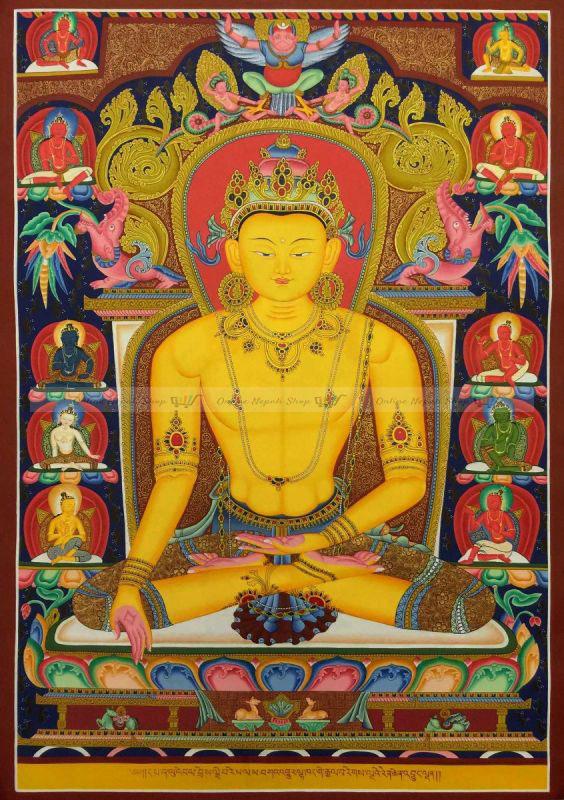
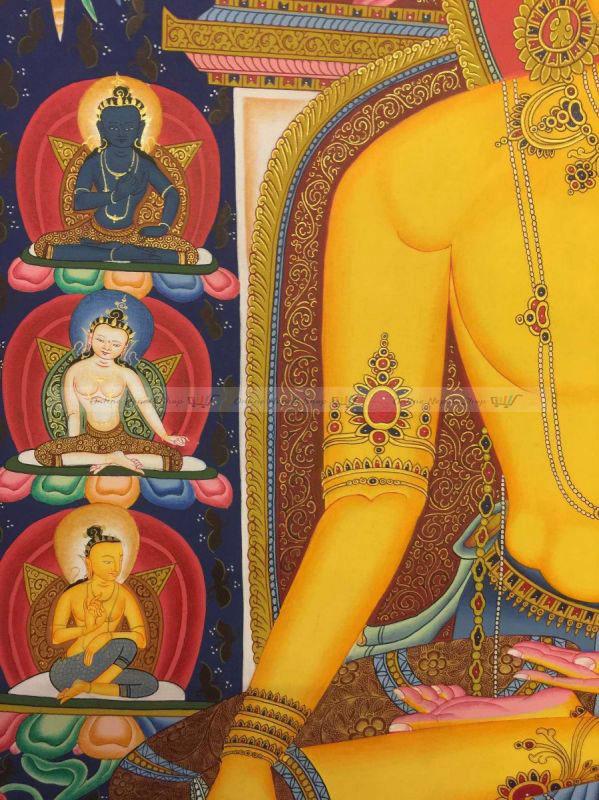
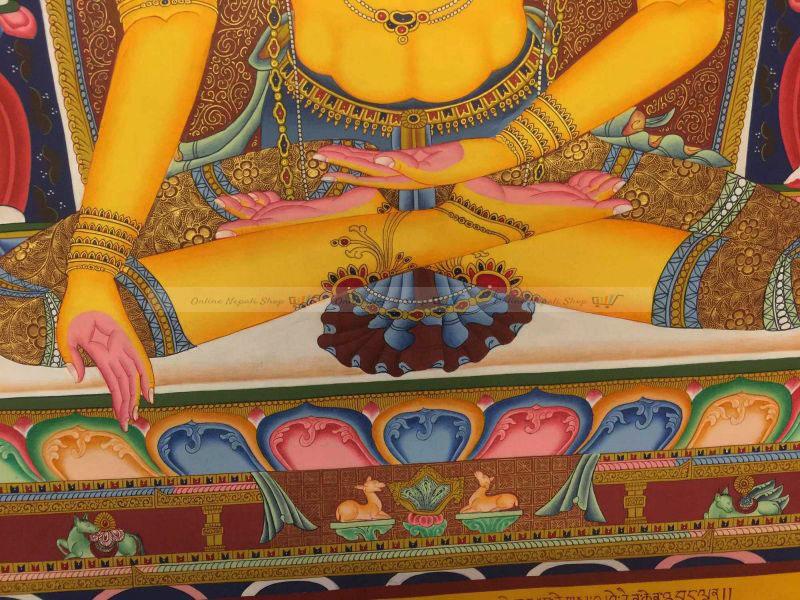
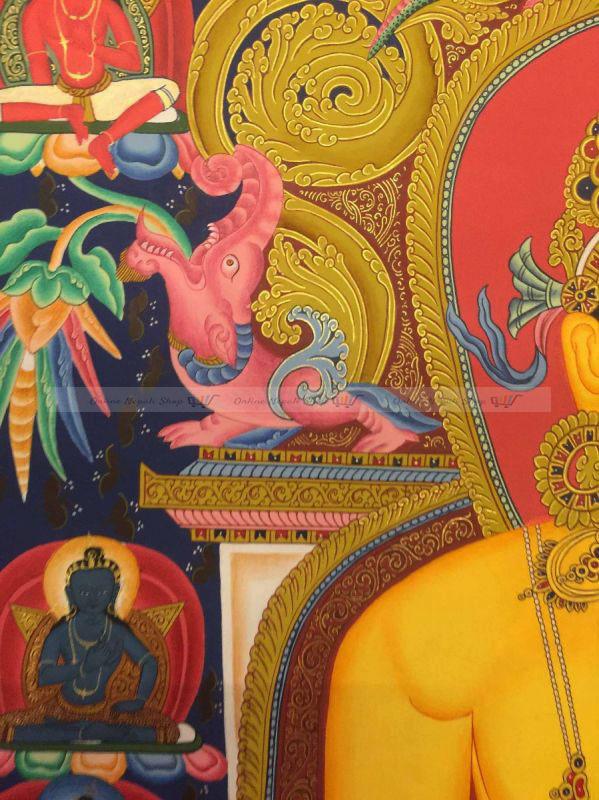
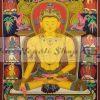
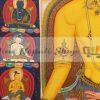
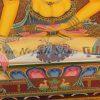
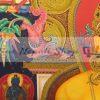
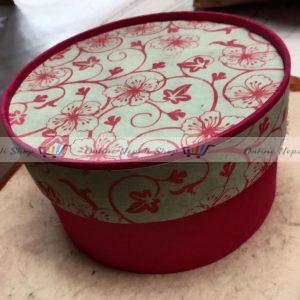
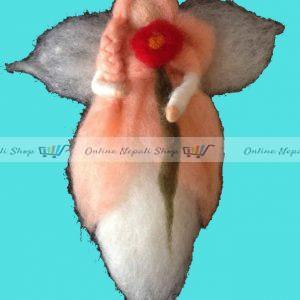
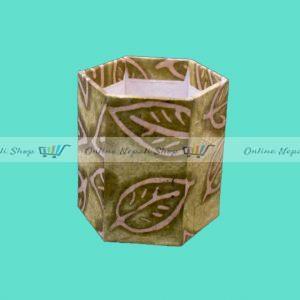

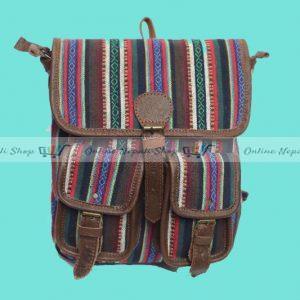
There are no reviews yet.